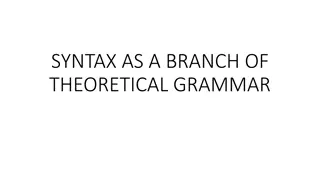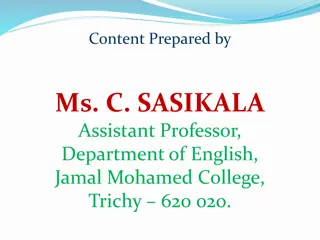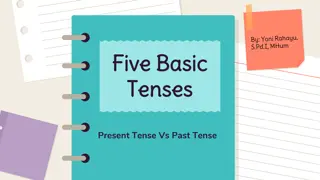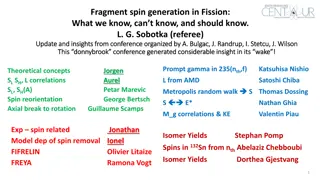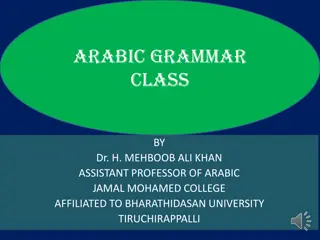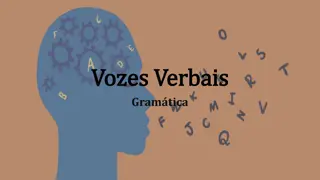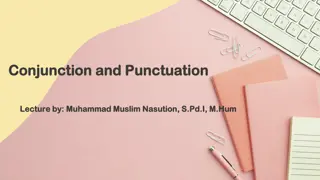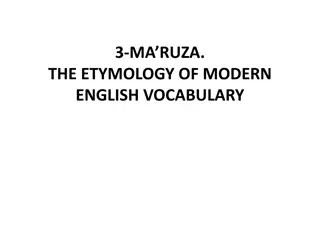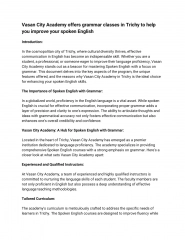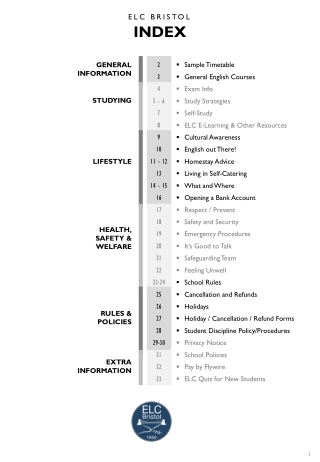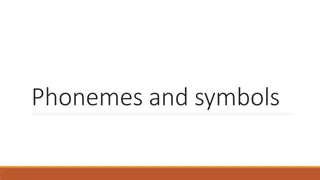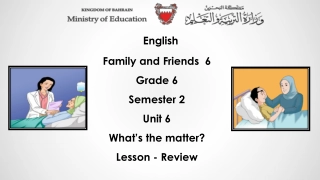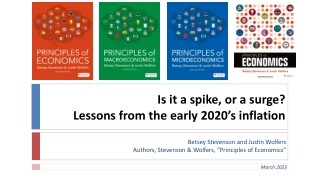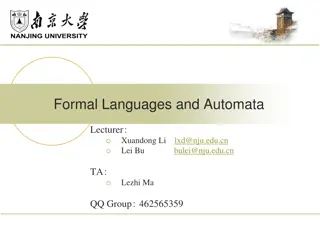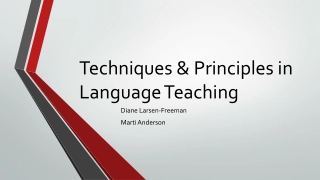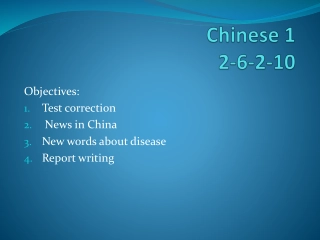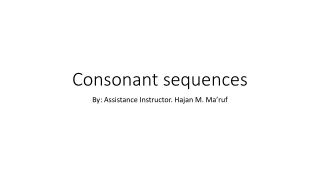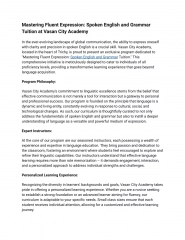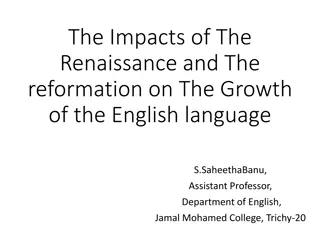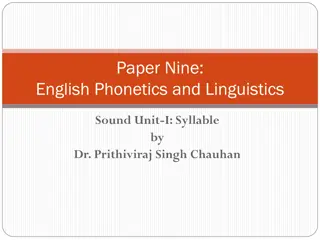Insights into Theoretical English Grammar
The theoretical English grammar delves into the subject matter of grammar, including systemic conceptions, grammatical forms, categories, paradigms, and morphological means. It discusses the constituent parts of language – phonology, lexicology, and grammar. The grammatical structure covers morphology and syntax, while practical and theoretical grammar aim to explain the grammar's functioning and rules. The unity of form and meaning is crucial in understanding grammatical elements.
Insights into Theoretical English Grammar
PowerPoint presentation about 'Insights into Theoretical English Grammar'. This presentation describes the topic on The theoretical English grammar delves into the subject matter of grammar, including systemic conceptions, grammatical forms, categories, paradigms, and morphological means. It discusses the constituent parts of language – phonology, lexicology, and grammar. The grammatical structure covers morphology and syntax, while practical and theoretical grammar aim to explain the grammar's functioning and rules. The unity of form and meaning is crucial in understanding grammatical elements.. Download this presentation absolutely free.
Presentation Transcript
The main notions of theoretical English grammar
Outline 1. The subject-matter of the theoretical and practical grammar. 2. Grammar in the systemic conception of language. 3. The grammatical form. The grammatical category. 4. The grammatical paradigm. The grammatical meaning. 5. Morphological means of expressing grammatical meanings. 6. Notional parts of speech. The noun
Constituent parts of a language Language is a system of interconnected and interdependent meaningful units. Three constituent parts of a language - the phonological system (determines the material (phonetical) appearance of its units) (Phonology) - the lexical system (comprises the naming means of language, i.e. words and stable word-groups) (Lexicology) - the grammatical system (determines the combination regularities of naming means in the formation of sentences) (Grammar) A language is formed only by the unity of these three parts.
Grammatical structure morphology deals with - paradigmatic and syntagmatic properties of morphemes and words - the internal structure of words and their relationship to other words and word forms within the paradigm - morphological categories and their realization syntax deals with - the way words are combined - the functions of words and their relationship to other words within word-groups, sentences and texts - the way in which the units and their meanings are combined - peculiarities of syntactic units, their behaviour in different contexts
Practical and theoretical grammar Practical grammar describes grammar as a set of rules to follow Theoretical grammar - aims to explain how and why the grammatical system works - treats the language as a functional system, presenting definitions and scientific analysis of grammatical categories - analyses grammatical mechanisms of forming sentences out of words in the communicative process Grammatical elements of language show a unity of form and meaning, i.e. they present a unity of content and expression. The morpheme is considered to be one of the central notions in the theory of grammar. No attempt at grammatical study can be performed without it.
Grammatical meaning Lexical meaning represents the individual meaning of the word (e.g. shelf - a flat board which is attached to a wall, frame, etc., and on which objects can be placed). Grammatical meaning is very abstract, it is the meaning of a subclass or of the whole class, e.g. the class of nouns possesses the grammatical meaning of thingness. We may say that a noun shelf possesses its individual lexical meaning and the grammatical meaning of thingness, which is the meaning of the whole class. The noun shelf has the grammatical meaning of a subclass countableness (one shelf two shelves).
Grammatical form The grammatical form is the form of a word in a sentence or in a speech utterance, e.g. The lion is a symbol of authotity and command (the Common Case, Singular); The lions are the only species that forms social groups (the Common Case, Plural); The lion s roar can be heard up to 5 miles away (the Possessive Case, Singular); The lions habitat is the savannas of Africa (the Possessive Case, Plural).
Grammatical form Grammatical form puts together a whole class of words, and each word of the class expresses the corresponding grammatical meaning, e.g. a hand hands, a tree trees, a star stars; a table tables Grammatical form conveys division of the words according to the principle of expressing a certain grammatical meaning
Grammatical category Grammatical categories - the unity of identical grammatical meanings having the same form (e.g. past :: present :: future, singular :: plural). In most general terms grammatical categories may be defined as references of the respective objective categories. For instance, the objective category of time is represented in the grammatical category of tense.
Grammatical category Any grammatical category is represented by two or more grammatical forms (e.g. shelf :: shelves the grammatical category of number, Singular and Plural forms). The relation between two grammatical forms is called opposition The grammatical category can be determined as the opposition between two form-classes expressing the generalized grammatical meaning conveyed by means of paradigmatic correlation.
The grammatical paradigm the ordered set of grammatical forms, which are united by the generalized grammatical meaning and opposed to each other by different aspects of their grammatical meanings. The following paradigm represents the grammatical category of number: Lion Singular Number (unmarked member) Lions Plural Number (marked member) Thus, the members of the paradigm have common features and differential features.
Synthetical grammatical forms Synthetical and analytical morphological means of expressing grammatical forms ---- synthetical and analytical grammatical forms Synthetical grammatical forms can be realised with the help of: 1. Inner morphemic composition of the word (inner inflexion or vowel interchange): foot feet, man men, sit sat, read read, get got: inner-inflexional forms 2. Outer morphemic composition of the word inflexion (outer inflexion or grammatical suffixation): asks, studied, stronger: outer-inflexional forms 3. Suppletivity (when forms of the same word have different roots): do did, bad worse, one the first: suppletive.
Analytical grammatical forms Analytical grammatical form is a combination of an auxiliary word with a basic word, e.g. - studies , studied - synthetical forms as they are words both in form and in meaning - will study , has been studying analytical forms as they are words in meaning, but are combinations of words in form The grammatical meaning of an analytical form is made up by the combination of all the components, making up this form, e.g. 1. is checked the Present Simple Tense, the Passive Voice; is checking the Present Continuous Tense, the Active Voice; 2. will have checked the Future Perfect Tense, the Active Voice; have been checked the Present Perfect Tense, the Passive Voice.
Parts of speech lexico-grammatical classes of words grouped according to various formal and semantic features. all the members of the classes have certain characteristics in common, distinguishing them from the members of other classes.
Classifications of parts of speech There exist four approaches to the problem: 1. Classical (logical-inflectional) - based on Latin grammar, applicable for synthetic languages - declinable - having morphological forms (verbs, nouns, pronouns and participles) - indeclinable - lacking morphological forms (adverbs, prepositions, interjections and conjunctions) 2. Functional (H.Sweet) - nominative parts of speech (the noun-words: noun, noun-pronoun, noun-numeral, gerund, infinitive; the adjective-words: adjective, adjective- pronoun, adjective-numeral, participles; the verb: finite verb, verbals infinitive, gerund, participles) - particles (the adverb, preposition, conjunction and interjection)
Classifications of parts of speech 3. Distributional (Charles Fries) - based on the position and the ability of words to combine with other words - 4 major word-classes (traditional nouns, verbs, adjectives and adverbs) - 15 form-classes (function words) These classifications appear to be one-sided, as parts of speech are discriminated on the basis of either the word s meaning, or its form, or its function. 4. Complex - based on three criteria: - semantic (reveals the grammatical meaning of the whole word-class ) - formal (takes into account grammatical categories of words, their forms, their specific inflectional and derivational features) - functional (concerned with the combinability of words and their syntactic function in the sentence)
Present-day classification When characterizing any part of speech it is necessary to define: 1) its semantics; 2) its morphological features; 3) its syntactic peculiarities. The complex approach allows to divide all the words of the language into 2 groups: - notional words the words which denote things, objects, qualities, notions, etc. that is words having corresponding references in the objective reality - nouns, pronouns, verbs, adjectives, adverbs, numerals; - function words (or grammatical words) the words which do not have their own references in the objective reality - articles, prepositions, particles, conjunctions, modal words.
Present-day classification The division into notion and function words shows the interconnection of lexical and grammatical types of meaning. The lexical meaning dominates in notional words, whereas in the grammatical meaning predominates in function words. Notional words form the bulk of the existing vocabulary. The function words are few (only 50 of them in present-day English) but they are the most frequently used units. Controversies concerning the problem of classifying words into parts of speech still exist in Modern English.
The noun: semantic, morphological and syntactic features semantic morphological syntactic Simple Derived Compound Composite all syntactic functions except the predicate both right-hand and left-hand connections the most common noun determiners thingness, substantiality proper and common animate and inanimate countable and uncountable Number Case
The grammatical category of number the objective category of quantity the Plural form :: the Singular form the subclass of countable nouns The grammatical meaning of number does not necessarily mean the notional quantity. In other words, the singular form of the noun does not always refer to one object whereas the plural form is sometimes employed to denote one object consisting of several parts
The grammatical category of number the singular form is employed to denote: - oneness (an individual object), e.g. a tiger; -generalization (the meaning of the whole class of nouns), e.g. The tiger is a predatory animal; - indiscreteness / or uncountableness, e.g. water, money. The plural form of the noun is employed to denote: - the existence of several objects (tigers); - the inner discreteness ( , ), e.g. pluralia tantum nouns gloves, spectacles, etc.).
The grammatical category of number 1. The nouns expressing the opposition of explicit discreteness/indiscreteness: tiger :: tigers; 2. The nouns revealing discreteness/indiscreteness by means of lexical and syntactical correlation in the context. We may find two groups here: a) Singularia Tantum. This group includes various groups of nouns, such as proper names, abstract nouns, collective nouns, material nouns; b) Pluralia Tantum. This group includes the names of various objects comprising several parts (gloves), names of sciences (Physics, Linguistics), names of diseases (measles, mumps), games (checkers, draughts), etc. 3. The nouns possessing homogenous number forms. Here the number opposition is not expressed formally, however it is shown only lexically and syntactically in the context: e.g. Watch out! A deer is crossing the road. Watch out! The deer are crossing the road.
The category of case the relation of words to one another in the word-group or in the sentence the objective category of possession the Common Case :: the Possessive Case (friend :: friend s)
Meanings expressed by the Genitive case Possessive Genitive: John s car John has a car; Subjective Genitive: John s departure John has departed; Objective Genitive: John s arrest John was arrested; Adverbial Genitive: two weeks holiday N rested for two weeks; Genitive of destination: a mile s distance the distance is a mile; Equation Genitive: men s suits suits for men; Mixed Group: yesterday s hamburger.
The category of Gender No grammatical category of gender No morphological peculiarities the category of sex Lexical peculiarities (he, she; girlfriend, boyfriend; host hostess, prince princess, a cock a hen)
Reference literature 1. . . : . : , 2007. 328 . 2. . . Theoretical Grammar of English: Modern Approach. .: , 2009. 256 . 3. . . . : , 2009. 128 . 4. . ., . . . - . : , 2015. 200 . 5. Iriskulov A.T. Theoretical Grammar of English. Tashkent, 2006. 64 p. 6. Selivan L. Lexical Grammar. Cambridge Univ. Press, 2018. 244 p.


